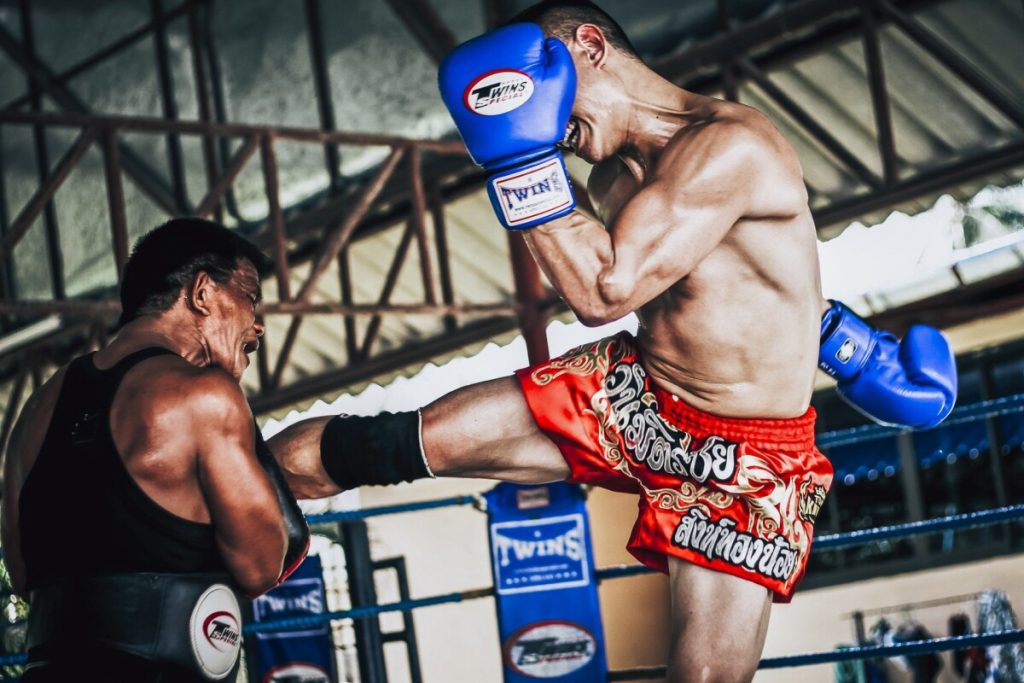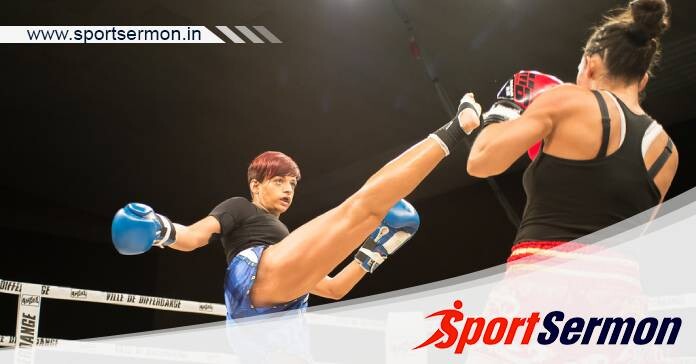K1 VS Muay Thai: The confusion is increased by the fact that Superbon and Buakaw Banchamek, two of Thailand’s top talents, play under both sets of regulations. Both rounds allow for the same number of strikes and have the same length. The similarity between the two sports—hockey and golf—remains unaltered.
The historical settings in which these sports were developed and the methods by which competitors compete and winners are declared were very different. Continue reading if you’re left scratching your head and wondering why some bouts go longer than others or why a boxer may throw an elbow in one match but lose points for it in another. Before posing a few straightforward questions for you to ask yourself, this article will provide you with a brief overview of the histories of the two sports so you may quickly determine which one you are watching the next time you see bouts online.
Once you are aware of the main disparities between these two sports, let us briefly discuss the differences between K1 vs Muay Thai and its more recent relative:
The History Of K1
K1 kickboxing started off as a Japanese organisation called K1 Global in 1993, which aimed to give martial artists a stage on which to compete against athletes from other striking disciplines. Although the regulations were initially identical to those of Kyokushin Knockdown Karate, the sport changed over time to provide competitors trained in various disciplines with a more even playing field.
The martial arts scene was greatly affected by the marketing, and soon strikers from as far away as Thailand, the Netherlands, and New Zealand were participating on the platform. Numerous kickboxing groups, like ISKA and WKN, adopted a similar strategy and started endorsing their own K1 divisions and champions.
The K1 ruleset has remained a major force in combat sports, despite the founding organisation going through financial difficulties before being sold off and reorganised in 2012. Well-known promotions like Glory and Superkombat draw inspiration from the original K1 promotion.
The 2007 K1-Max championship battle between Japanese kickboxer Masato and Thai superstar Buakaw, shows how the ruleset permits competitors from different disciplines to compete fairly.
You might also be interested in reading this: Must-Do Solo Muay Thai Exercises for All Skill Levels
The Background To Muay Thai
Though it originated in Thailand, muay Thai has a far longer history and is engrained in the culture of that country more than K1. It all started when the Siamese army (also known as the Thai army) started practising Muay Boran martial art in the sixteenth century. Given its close ties to Thai history, the country celebrates two national holidays: Muay Thai Day, which falls on February 6, and Nai Khanom Tom Day, which falls on March 17.
Athletes would compete inside a roped circle with their hands bound in rope in Muay Thai’s early incarnation as a competitive sport, known as Muay Khat Chueak. In the 1920s, a square boxing ring and leather gloves were introduced by British boxing, which led to a period of modernization. In many Thai stadiums, boxers still pay homage to their national history and Buddhist customs during prefight shows, despite this Westernisation.
K1 vs Muay Thai: What To Question

When Muay Thai is contrasted with K1 kickboxing, several important problems arise. Although there are many concerns concerning rule sets and dress rules, this article delves into further depth to make the distinctions clear. Here are some crucial questions to think about:
1) What do they put on within the ring?
Thai boxers usually enter the ring wearing a headdress, called a Mongkhon (or Mongkol), as part of their pre-fight ritual. These headpieces, which are customarily woven by personal trainers in their gym, are never allowed to touch the ground and are blessed by Buddhist monks for protection and good fortune.
Pra Jiad (or Prajet) armbands are made of cloth and are frequently seen on Thai boxers. In contrast to the Mongkhon, which is taken off prior to combat, the Pra Jiads are worn during the whole fight.
Though it is rare for fighters from other disciplines to wear these sacred things, it is fair to assume that you are watching Muay Thai if both competitors wear them. Thais who compete in other disciplines, such as K1, are nonetheless known to wear them into the ring.
2) Do They “Dance” Prior to Fighting?
An essential part of traditional Muay Thai culture is the Wai Khru, also known as Ram Muay. A warrior honours their mentors and ancestors with this dance, which is done to traditional Thai music. You won’t see the Wai Khru worn in other competitions, unlike the Mongkhon and Prad Kiat, which were exclusively used before official Muay Thai matches.
3) Is There Music Played While Fighting?
Like other combat sports, K1 only allows spectators to shout enthusiastically during a bout. A mix of drums, brass cymbals, and reed instruments are used by musicians to play traditional music during a Muay Thai competition. It has a distinct sound that gets faster as the combat gets more intense.
You are watching Muay Thai if you hear this song.
4) How many rounds do fights consist of?
The competition format will follow K1 rules, with three rounds and a one-minute interval. Should a tie occur, a fourth “overtime” round will determine the winner. Five fighting rounds and a two-minute break are the standard format of a Muay Thai competition.
Thus, if the bout you are seeing is set to last five rounds, it is unquestionably Muay Thai.
5) Can They Clinch And Elbow?
The K1 ruleset was developed to provide competitors from a wide range of combat styles with an even playing field. As a result, a variety of methods, such as punches, kicks, and knees, can be employed in both games. Certain Thai moves, such as elbows and grabbing an opponent’s kicking leg, are forbidden under K1 regulations. Similarly, it is forbidden to clinch, which is the act of restraining an opponent’s head and arms in order to deliver knee and elbow blows.
K1 is thus demonstrated when two Thai-born athletes compete while wearing prad jiats and are called out for elbowing one another.
6) How Is The Match Scored?
Although figuring this out by watching a battle might be more difficult, it is still vital, and eventually, you might be able to tell what sport the competitors are competing in.
While conventional Muay Thai judges would score a bout in its entirety to determine the winner, K1 uses a “10-point must” method to decide battle outcomes. Each round of a competition must be scored independently of the others according to the 10-point must system, with the winner of each round earning 10 points and the losing team receiving 9 or less.
Judges will consider the whole fight when determining the victor of a five-round Muay Thai competition. According to this scoring system, a fighter may lose the first three rounds of a fight but still win if they conclude the fight in a way that is obviously superior. It also frequently happens that stadium fighters will fight slowly in the early rounds in order to conserve energy for the final stages of the fight.
It should be mentioned that multiple criteria will be used by judges to determine how well a bout is scored. One of the main distinctions is that in Muay Thai, the quantity of strikes is not as significant as it is in K1, where the number of clean blows landed is crucial. In actuality, a strike hardly counts, if at all, if it hits and does not clearly harm the opponent—for example, by shifting their body or impairing their balance.
“Modern” Muay Thai And Creating a Connection Across Sports

Does the old music make you feel headachey? When you watch the Wai Khru Ceremony, do you become bored? Do you understand the traditional Muay Thai scoring system? You’re not by yourself.
Much of the information about Muay Thai above relates specifically to the five-round matches that are often held in Thai stadiums. Many fans of combat sports are unfamiliar with this kind of competition, and they may get disinterested in the first few rounds of sparring or perplexed when a fighter is repeatedly knocked down in the ring but still prevails.
A number of campaigns in recent years have attempted to increase the accessibility of muay thai to a larger public. Promotions like ONE Championship and Rajadamnern World Series (RWS) have embraced the 10-point minimum rule and three-round bouts to increase contest excitement and reduce spectator confusion. In order to close the formerly significant divide between traditional Muay Thai and contemporary kickboxing, ONE Championship has also adopted the usage of its own “Global” Muay Thai ruleset for scoring bouts.
Judges score fights using this set of rules in the same manner that K1 bouts have always been scored. Matches between kickboxing and Muay Thai are assessed using the same standards. This might make it more challenging to quickly identify the sport you are seeing. If that’s the case, you can use the following formula to figure out whether you’re watching modern Muay Thai or K1:
- Are they able to grab, clinch, and elbow to sweep the opposition?
- In that case, what you’re seeing is contemporary Muay Thai.
- If the response is negative, then you are seeing kickboxing or K-1.
K1 VS Muay Thai, the complete difference between both. Let us know your thoughts in the comment section below.

